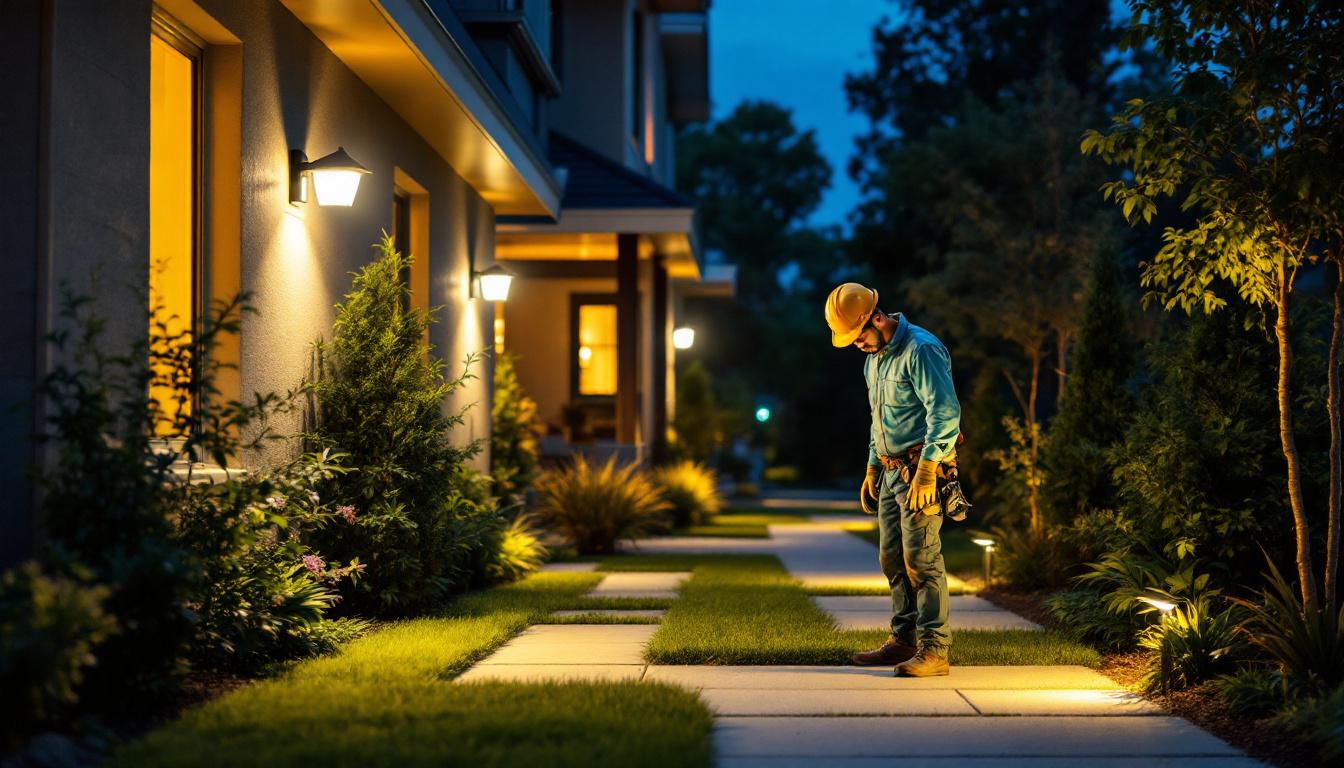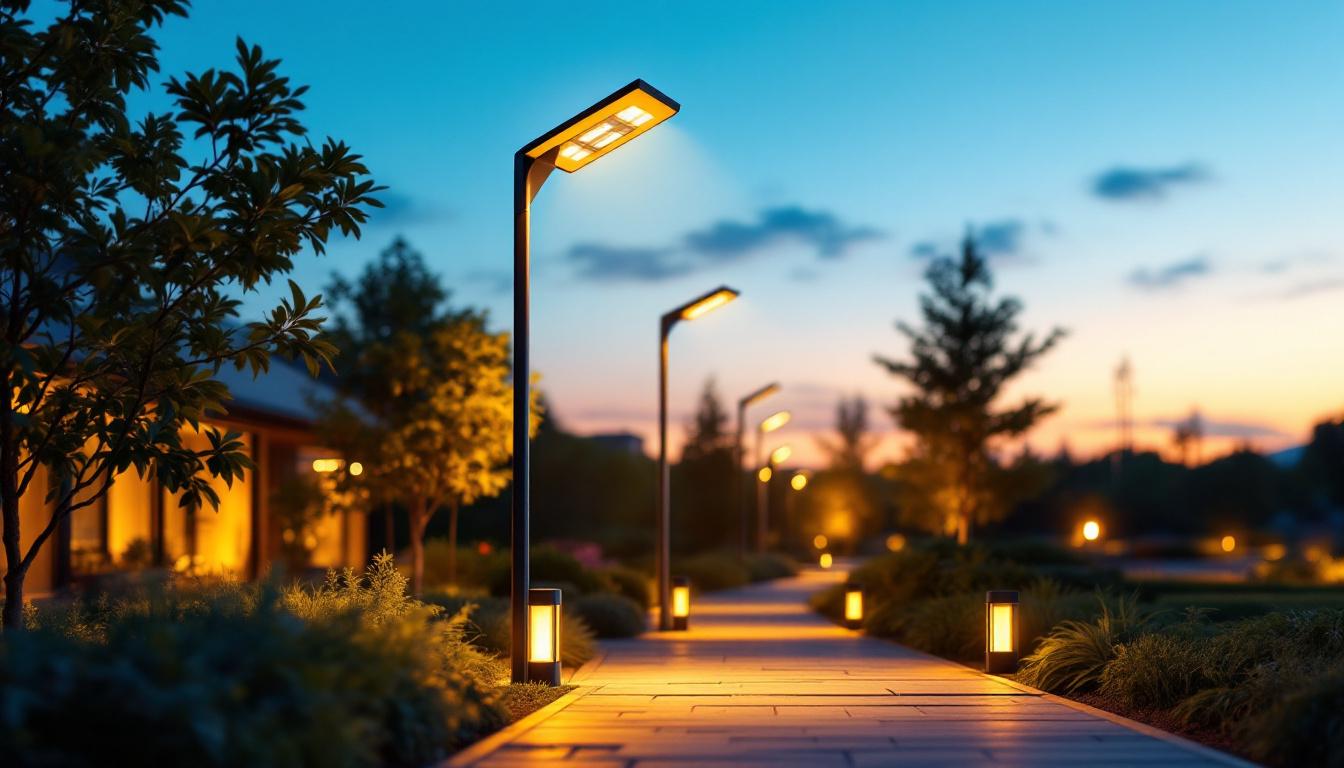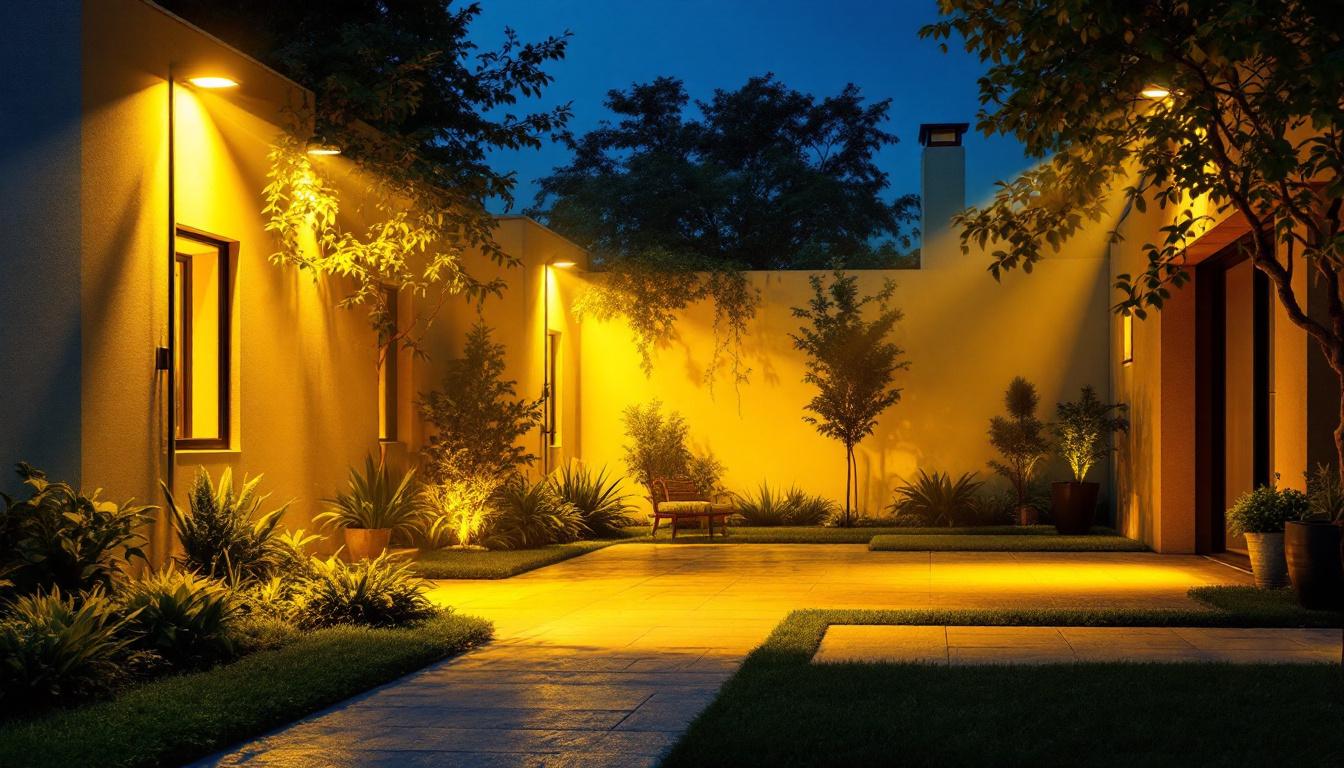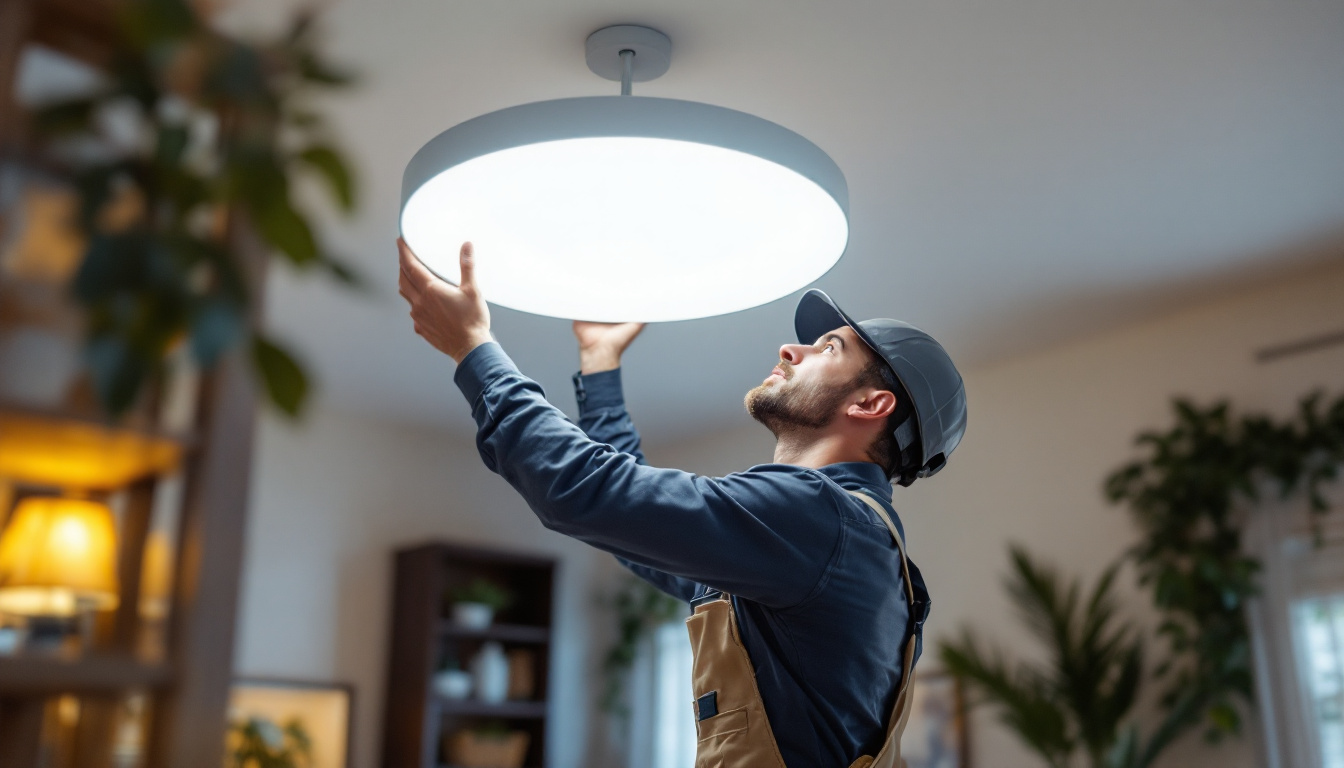
In an era where safety and security are paramount, outdoor security lighting has become an essential aspect of residential and commercial properties. Motion-activated lights not only enhance safety but also deter potential intruders. For lighting contractors, understanding the intricacies of outdoor security lights is crucial for providing effective solutions to clients. This guide delves into the various components, benefits, installation considerations, and maintenance tips associated with motion sensor lights.
Motion sensor lights operate using advanced technology that detects movement within a designated area. This technology can vary, but the most common types include passive infrared (PIR), microwave, and dual technology sensors. Each type has its own advantages and ideal use cases, making them suitable for different environments and applications.
PIR sensors are the most widely used motion detectors for outdoor security lighting. They function by detecting changes in infrared radiation, which is emitted by warm bodies, such as humans and animals. When a person or animal moves within the sensor’s range, the change in infrared radiation triggers the light.
These sensors are favored for their reliability and cost-effectiveness. They typically have a range of about 20 to 40 feet and can cover a wide area, making them suitable for residential properties. However, they can be sensitive to environmental factors, such as heat from the sun or moving branches, which may lead to false alarms. To mitigate these issues, many modern PIR sensors come equipped with adjustable sensitivity settings, allowing homeowners to customize the detection range based on their specific needs and the surrounding environment.
Microwave sensors operate by emitting microwave signals and measuring the reflection of those signals. Unlike PIR sensors, they can detect movement through walls and other obstacles, making them ideal for applications where coverage is needed beyond a direct line of sight.
While microwave sensors can offer greater detection capabilities, they are often more expensive and may require more careful placement to avoid unnecessary activation. They are particularly useful in commercial settings or larger properties where enhanced security is needed. Additionally, some microwave sensors feature adjustable detection zones, allowing users to fine-tune the area they wish to monitor, which can be particularly beneficial in high-traffic areas where false alarms could be disruptive.
Dual technology sensors combine PIR and microwave technologies to minimize false alarms while maximizing detection capabilities. By requiring both technologies to be triggered, these sensors provide a more reliable solution for outdoor security lighting.
Lighting contractors may recommend dual technology sensors for high-security areas or locations where environmental factors frequently trigger false alarms. While they may come at a higher initial cost, the benefits of reduced false alarms and enhanced security often justify the investment. Furthermore, dual technology sensors are increasingly being integrated with smart home systems, allowing for remote monitoring and control via smartphones or tablets. This integration not only enhances security but also provides users with real-time alerts and the ability to adjust settings from anywhere, making them an appealing choice for tech-savvy homeowners looking to bolster their security measures.
Outdoor motion sensor lights offer numerous advantages that make them an attractive option for both homeowners and businesses. Understanding these benefits can help lighting contractors effectively communicate the value of these systems to their clients.
The most significant benefit of outdoor motion sensor lights is enhanced security. By illuminating areas around a property when movement is detected, these lights can deter potential intruders. Criminals are less likely to approach a well-lit area, knowing they are exposed and visible.
Moreover, the sudden activation of lights can startle intruders, providing an added layer of protection. This psychological deterrent can be particularly effective in residential neighborhoods, where visibility is crucial for community safety. In addition to deterring crime, these lights can also help monitor wildlife activity, allowing homeowners to be aware of any unwanted animal intrusions that may pose a threat to gardens or pets.
Motion sensor lights are designed to operate only when needed, making them an energy-efficient lighting solution. Unlike traditional outdoor lights that remain on throughout the night, motion-activated lights conserve energy by turning off after a designated period of inactivity.
This energy efficiency not only reduces electricity bills for homeowners but also contributes to environmental sustainability. Lighting contractors can promote this feature as a selling point, appealing to eco-conscious clients looking to reduce their carbon footprint. Furthermore, many modern motion sensor lights utilize LED technology, which not only enhances their longevity but also significantly decreases energy consumption compared to incandescent bulbs, making them a smart investment for the future.
Outdoor motion sensor lights provide convenience and safety for property owners. They automatically illuminate pathways, driveways, and entry points, ensuring visibility during nighttime hours. This feature is particularly beneficial for individuals returning home after dark, as it helps prevent accidents and enhances overall safety.
Additionally, the convenience of automated lighting can be appealing for homeowners who may forget to turn on their outdoor lights. With motion sensor lights, there is no need for manual operation, allowing for a seamless experience. This is especially useful for families with children or elderly members who may have difficulty navigating in the dark. Moreover, some models come equipped with adjustable sensitivity settings, allowing users to customize the range and duration of illumination based on their specific needs, ensuring that the lights are both effective and tailored to the unique layout of their property.
When it comes to installing outdoor motion sensor lights, several factors must be taken into account to ensure optimal performance and effectiveness. Lighting contractors should be well-versed in these considerations to provide clients with the best possible solutions.
The placement of motion sensor lights is critical for achieving maximum coverage and effectiveness. Contractors should assess the property layout and identify key areas that require illumination, such as entryways, garages, and dark corners.
It is advisable to install lights at a height of 8 to 10 feet to minimize the risk of tampering while ensuring a broad coverage area. Additionally, the sensor’s range should be considered to avoid blind spots and ensure that the entire area is adequately lit when movement is detected.
Outdoor motion sensor lights can be powered through various means, including hardwired connections, solar power, or battery-operated systems. Each option has its pros and cons, and contractors should evaluate the specific needs of the property before making a recommendation.
Hardwired systems typically offer more consistent performance and are less susceptible to battery depletion. However, they require more extensive installation work. Solar-powered lights are easy to install and environmentally friendly but may be less reliable in areas with limited sunlight. Battery-operated systems offer flexibility but require regular maintenance to replace batteries.
Given that outdoor motion sensor lights are exposed to the elements, selecting weather-resistant and durable fixtures is essential. Lighting contractors should look for products with a high IP rating, indicating protection against dust and moisture.
Materials such as aluminum or high-quality plastic can enhance durability, ensuring that the lights withstand harsh weather conditions. Clients should be informed about the importance of choosing robust fixtures to minimize maintenance and replacement costs in the long run.
Outdoor lights can accumulate dirt, dust, and debris over time, which may hinder their performance. Regular cleaning of the fixtures and sensors is essential to maintain functionality. Clients should be encouraged to wipe down the lights with a soft cloth and mild detergent to remove any buildup.
Additionally, the sensor lenses should be kept clear of obstructions, such as spider webs or leaves, to ensure accurate detection of movement. A simple cleaning routine can significantly enhance the effectiveness of the lighting system.
Over time, landscaping changes or new structures may obstruct the sensor’s field of view. Lighting contractors should recommend periodic checks to ensure that nothing is blocking the sensors. This may include trimming overgrown bushes or relocating outdoor furniture that may interfere with the sensor’s detection capabilities.
By keeping the sensor’s field of view clear, clients can maximize the effectiveness of their motion sensor lights and ensure they operate as intended.
Encouraging clients to test their motion sensor lights regularly is vital for identifying any issues early on. A simple test can involve walking within the sensor’s range to ensure the lights activate as expected. If the lights fail to turn on or have reduced sensitivity, it may indicate a need for adjustment or replacement.
Regular testing can help catch minor issues before they escalate, ensuring that the lighting system remains reliable and effective in providing security.
Outdoor motion sensor lights are an invaluable asset for enhancing security and safety in residential and commercial properties. For lighting contractors, understanding the technology, benefits, installation considerations, and maintenance practices associated with these systems is essential for delivering quality service to clients.
By staying informed about the latest advancements in motion sensor technology and best practices for installation and maintenance, contractors can offer tailored solutions that meet the unique needs of each property. As the demand for effective outdoor security lighting continues to grow, lighting contractors who prioritize education and expertise will be well-positioned to succeed in this competitive market.
Ready to elevate your lighting projects with the best outdoor motion sensor lights on the market? Look no further than LumenWholesale. Our commitment to quality and affordability ensures that you have access to spec-grade lighting products that meet the highest industry standards. Say goodbye to inflated markups and hello to unbeatable wholesale prices, free shipping, and the convenience of bulk buying. Enhance your service offerings with reliable, high-performance lighting solutions that will impress your clients and illuminate their properties with confidence. Take the first step towards a brighter future and visit Wholesale Lighting at the Best Value today.

Discover how solar powered pole lamps are revolutionizing the lighting industry with sustainable technology, cost efficiency, and innovative design.

Discover expert tips on under counter kitchen lighting with insights from a seasoned lighting contractor.

Explore the science behind exterior flood light fixtures and discover essential insights for lighting contractors.

Discover the key traits that distinguish top lighting contractors in the LED light fixture industry.